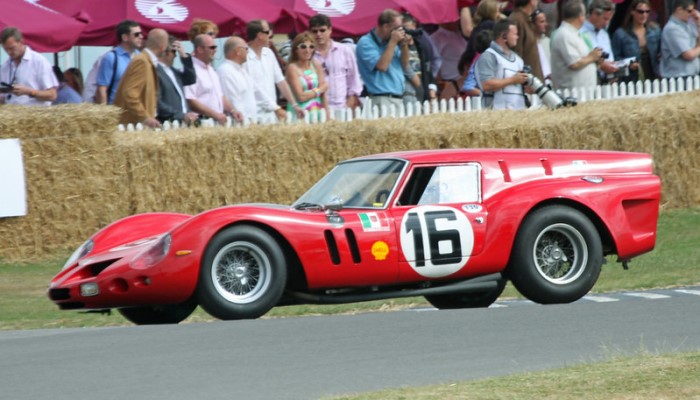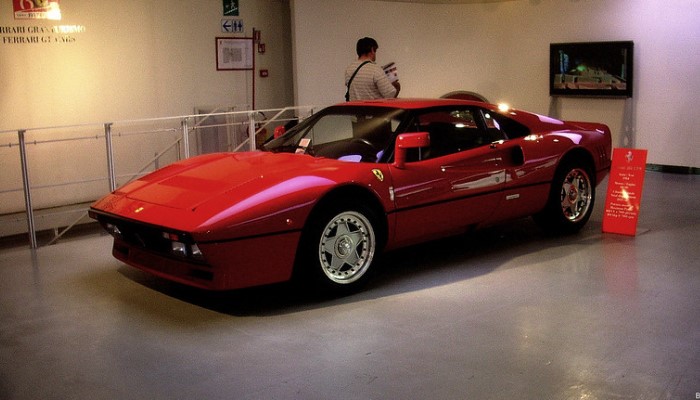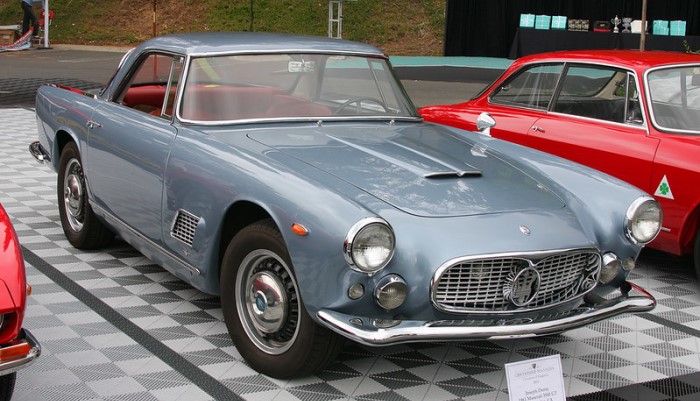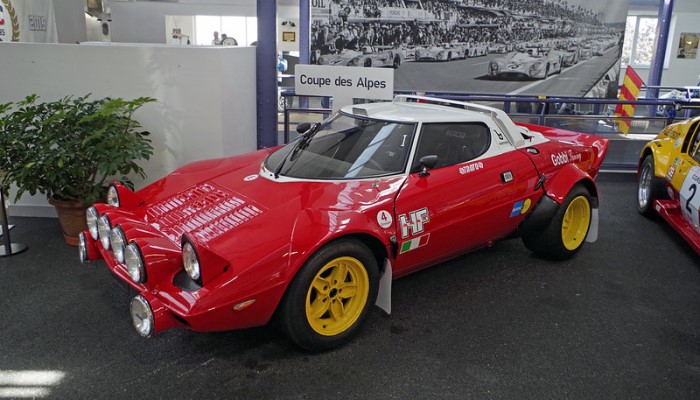Ferrari 250 Testa Rossa
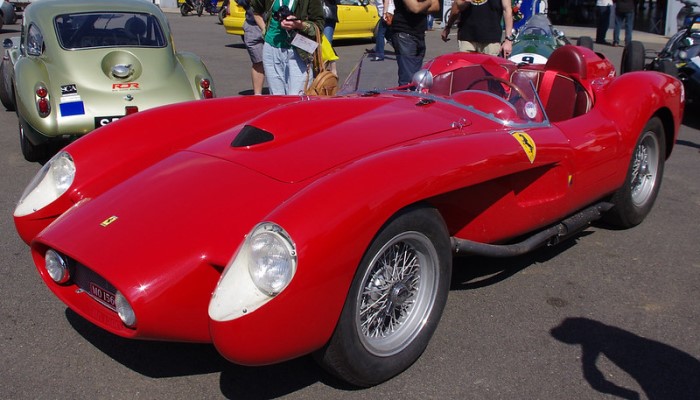
Photo: "1957 Ferrari 250 Testa Rossa" by Dave Hamster
True Racing Legend
In two years of production, from 1957 to 1958, 19 unique Ferrari 250 TR racing cars were assembled at the Ferrari factory.
The number "250", as was customary with Ferrari, showed the volume in cubic centimeters of one of the twelve cylinders of the V-shaped engine, and the abbreviation TR—Testa Rossa (Red Head)—hinted at the color of the engine's cylinder heads.
The car had a body with pontoon wings, the work of Scaglietti, and a 12-cylinder engine designed by Gioacchino Colombo with six Weber 38 DCN carburetors. Its 300 HP was delivered to the rear wheels via a four-speed manual transmission. The 800-kilogram racing car reached a top speed of 168 mph (270 kph).
Despite good performance and speed, the Testa Rossa was not a technically advanced car. The tubular steel frame was of the traditional ladder design; the DeDion rear axle was long used in race cars; all four wheels had archaic drum brakes; and the engine design had over a decade of history.
In 1955, during the 24 Hours of Le Mans, a fatal accident occurred, and the International Sports Committee began to conduct research aimed at making racing safer for both riders and spectators.
The need for this was confirmed in 1957 by the loss of life at the Mille Miglia races. At the end of this year, the Committee decided to reduce the volume of engines participating in racing cars, starting with the 1958 season, to 3.0 liters.
Many traditional racers were unprepared for this turn of events. Aston Martin, Lotus, Cooper, and Jaguar were considering quitting racing. Under these conditions, Enzo Ferrari, who foresaw a change in the rules of the competition, was able to take the lead in the Championship.
From 1958 to 1961, the Ferrari 250 TR entered 19 Championship races, finishing first ten times. At this time, the design of the car was constantly improved; Dunlop disc brakes were installed; the valve springs of the engine were replaced, which led to an increase in power to 306 hp; and a five-speed gearbox was installed.
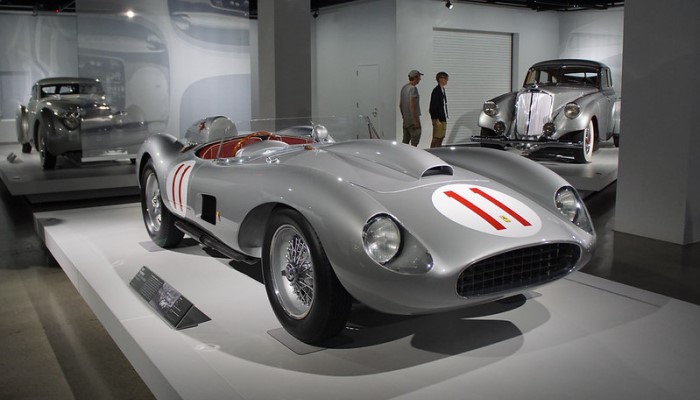
By the 1961 season, the car received a new chassis with a spatial design and the name 250 TRI.
A new tightening of the rules introduced in 1962 made it impossible for the Testa Rossa to continue racing. But by this time, Ferrari had prepared a worthy replacement.
Dominant Racer
Throughout its racing history, the Ferrari 250 Testa Rossa proved to be a formidable opponent on the track. This iconic sports car racked up an impressive series of victories across multiple racing disciplines.
In 1958, the Ferrari 250 Testa Rossa debuted at the 24 Hours of Le Mans, one of the premier endurance races in the world. The car's first outing was a success, with drivers Olivier Gendebien and Phil Hill taking the top spot on the podium.
This would be the first of three consecutive Le Mans victories for the 250 Testa Rossa, cementing its status as one of the most dominant cars in endurance racing history.
The 250 Testa Rossa also had success in other endurance races, winning the 12 Hours of Sebring three times in the late 1950s and early 1960s. In addition, the car was a force to be reckoned with in shorter races, winning the Targa Florio multiple times and taking the checkered flag at the famed Nürburgring track.
One of the most impressive aspects of the Ferrari 250 Testa Rossa's racing record was its versatility. The car performed well in a variety of conditions and terrain, from the fast and flat Le Mans circuit to the twists and turns of the Targa Florio's mountain course.
Overall, the Ferrari 250 Testa Rossa's results in races speak for themselves. With a track record that includes numerous victories in some of the most prestigious races in the world, this car remains an enduring symbol of Ferrari's racing prowess.
Why did the Ferrari 250 Testa Rossa Get a Hard Top?
The answer lies in the car's racing history. Originally, the 250 Testa Rossa was designed to be an open-top sports racer, perfect for competing in endurance races like the 24 Hours of Le Mans.
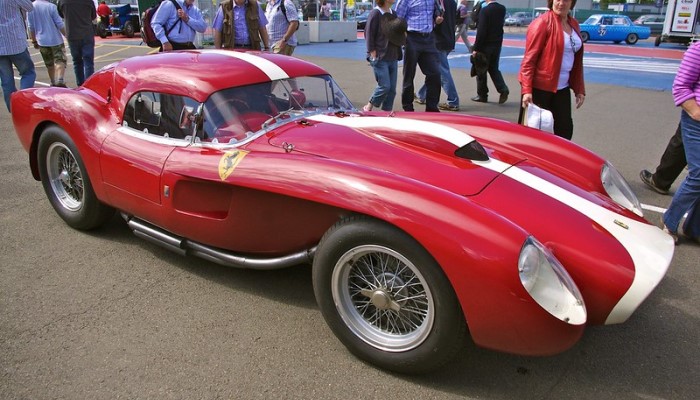
Photo: "1957 Ferrari 250 Testa Rossa" by Dave Hamster
However, as the rules governing these races evolved over time, it became apparent that the car needed a closed cockpit in order to compete at the highest level.
This was because many events had adopted safety regulations designed to protect drivers from the potential hazards of racing at high speeds. These rules stated that all cars must have a hard top in order to participate. While this may have seemed like an inconvenience at first, it actually had a number of benefits for the Testa Rossa.
First of all, the hard top provided additional protection for the driver, shielding them from debris, wind, and rain. It also reduced wind resistance, making the car more aerodynamic and faster on the track.
Finally, the hard top gave the Testa Rossa a more aggressive and imposing appearance, helping it to stand out from the competition.
Despite these benefits, many purists still lament the decision to add a hard top to the Testa Rossa. They argue that the car's original design was perfect as it was, and that the addition of a hard top was a unnecessary modification.
However, for those who appreciate the car's racing history and performance capabilities, the hard top is seen as a necessary evolution that helped the Testa Rossa compete at the highest levels of motorsport.
What Is It That Makes the Testa Rossa So Special?
For starters, it was built during a time when Ferrari was at the pinnacle of its racing success. Its success on the track helped solidify Ferrari's reputation as one of the greatest racing teams in the world, and defined the Testa Rossa's status as a true racing legend.
Of course, all this history and beauty comes with a hefty price tag. In recent years, Testa Rossas have sold for anywhere from $10 million to $40 million, depending on factors like rarity, condition, and racing history.
But for serious collectors and Ferrari enthusiasts, the price is well worth it for a chance to own one of the most iconic sports cars in history.
So if you're in the market for a Ferrari 250 Testa Rossa, be prepared to shell out some serious cash - but also know that you'll be investing in a truly unique piece of automotive history.
From its racing success to its stunning design, the Testa Rossa is a timeless classic that will continue to captivate collectors and car enthusiasts for many years to come.

Unique Car Zone Team
A group of several fans of everything that moves on four wheels, a few article creators, a couple of marketing strategists, designers, web developers, and lots of coffee.




